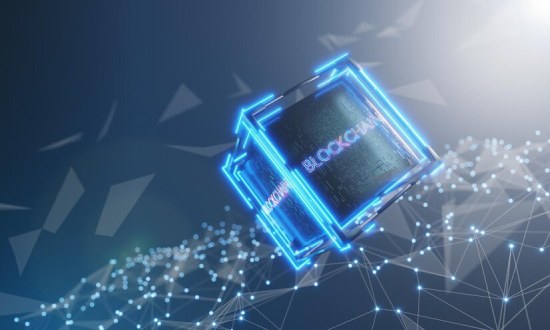-
In several industries, including telecom, blockchain technology can change business models by enabling improvements in transparency and productivity in processes. Blockchain implementations like Hyperledger application development, though, are new and developing, and business-wide compatible frameworks are most likely only a few days away.
However, unforeseen developments or lost opportunities in the ecosystem of telecom await with blockchain technology integration. Analysts, developers, and decision-makers should start analyzing blockchain technology implementations in both fundamental and related processes and business activities. Early experience with relevant opportunities and risks would help them position firmly. When the technology gets matured and is ready for broader adoption, they can achieve strengths across sales growth and reduced cost.
Blockchain Technology
One of the most commonly debated and talked up innovations is blockchain technology. With the use cases, PoCs (proofs-of-concept), and fully-built companies focused on blockchain technology emerging increasingly, only a few industries are there that are not either excited or concerned about its potential.
How it Works
Resiliency and reliability are the benefits of this method of multiple, distributed storage. Any participant in the network can validate the accuracy of transactions. Further, to verify transactions, network consensus methods and cryptographic technologies come in use. Therefore, it does not require a central authority or an external auditor to establish trust. It occurs continuously across the network.
The Emergence of Distributed Ledger Implementation
Also, the distributed infrastructure of blockchain technology is error-resistant. The network build on top of blockchain remains active even in the case of a breakdown or malfunctioning of a significant number of network members because of having no single point of failure. The latest data contained in the blockchain remains unchanged. When applied to the blockchain, the record-keeping process prevents transactions from being removed or reversed as soon as new blocks get included. The use case described herein focuses on the distinctive features of blockchain technology that are facilitators for more secure, interfere-proof, and failure-resistant software in telecom.
Also, Read | Considering Distributed Ledger Technology (DLT) for Business Solutions
Blockchain in Telecom
Historically, key communications service providers (CSPs) have owned end-to-end telecom value chains for both customers and enterprises. It includes communication infrastructure, core data and voice access provision, and associated customer services. However, in an atmosphere of intensified competition, from declining voice revenues to rising costs due to high bandwidth demands, there is an increasing requirement to reduce costs as well as find new revenue streams. Blockchain has the opportunity to be what the Internet was for 'information.'
Additionally, industries such as banking, healthcare, and government are exploring the technology's use cases. However, blockchain application development for a CSP is also possible, both within its existing portfolio of functions and in the potential telecom developments.
In their management solutions and related facilities, CSPs will most likely see a significant effect of blockchain technology. It will create opportunities for cost savings through process efficiency improvements and sales growth with new revenue models. The promise of the blockchain for CSPs is demonstrated by the use case in the article later.
Advantages of Using Blockchain in Telecom
- The trust powered by a blockchain facilitates collaboration between different partners. It does so by providing a holistic view of transactions and liabilities. It, in turn, enables the elimination of third parties, and thus, resulting in cost savings.
- Instead of the need for consolidation across multiple disparate structures, it promotes a single view of data. Due to the history of all transactions visible in the immutable ledger, it also makes for accurate audit trails.
- In roaming and other situations, the adoption of smart contracts enables almost immediate billing, thereby resulting in increased revenue management and fraud elimination.
- Provides opportunities to promote new revenue-generating business models for communications service providers, searching for fresh ways to improve both top and bottom lines.
- A blockchain can serve as the database that enables an M2M economy to flourish, for instance, based on the general platform on which M2M transactions can get registered. Therefore, it can serve as the enabling factor for an IoT infrastructure.
Also, Read | Assessing the Advantages of Ethereum Blockchain Solutions for Enterprises
Blockchain in Telecom | Use Case
Fraud Prevention
Fraud identification and mitigation remain to be issues of importance to most CSPs, owing to the industry's fraud losses of over USD 38 billion per year. The telecom sector still has not discovered a way to deter fraud efficiently and sustainably. In theory, blockchain is a strong candidate for dramatically reducing fraud costs, for instance, in roaming and identification protection.
fraud in Roaming Services
Traditional Systems
When a user makes a call/event, the Visited Public Mobile Network (VPMN) checks with the Host Public Mobile Network (HPMN) by accessing the Home Location Register (HLR) for the facilities the roaming user has registered. Then, call information records (CDRs) are submitted to their respective networks' billing systems. These frameworks are in command of CDR processing and the creation of subscriber invoices. As a Transfer Account Procedure (TAP) file, the VPMN transfers CDR information to the HPMN. For these archives, some businesses serve as a Data Clearing House (DCH). A DCH is accountable for the transfer and translation of the TAP data. It acts on behalf of the CSP that has employed it.
Upon receiving the TAP data, the HPMN shall settle the payments for the expenses incurred by the VPMN in compliance with the respective roaming arrangement protocols,
Current challenges with roaming fraud happen when a consumer uses the HPMN resources through the use of the VPNM. However, the HPMN fails to charge for the services rendered to the user. But, it has to pay for the roaming services to the VPNM. Two features become vulnerable due to roaming fraud:
Extended identification period: Because the fraud happens while the subscriber is on a network other than the HPMN, due to delays in the exchange of data between VPMN and HPMN, the time needed to detect the fraud is longer.
Extended Addressing Period: The period to react to the violation is prolonged thanks to the shortage of oversight over the system in which the infringement happened than if it has happened in the respective system managed by the HPMN.
Also, Read | Smart Contract Solutions for Business | Advantages and Use Cases
A Hyperledger Blockchain-based Approach
We may introduce Hyperledger application development between each pair of providers with a roaming agreement. The two operators' assigned nodes serve as miners to check the integrity of each interaction broadcast on the system. The roaming arrangement will be enforceable as a smart contract solution between the HPMN and the VPMN. It will execute when there's a transaction transmission across the blockchain network containing the CDR data. The VPMN communicates the CDR information as a transaction to the HPMN. It happens whenever a subscriber causes an incident on a visiting network. The smart contract will get activate by this data and enforce the terms of the arrangement. Thus, the HPMN will measure the billing sum automatically. It will be depending on the rendered services and send this information back to the VPMN.
In line with blockchain-based smart contract logic, it enables us to generate immediate and guaranteed approval as well as settlement. The DCH serving as a middleman can also be done away with by CSPs, resulting in more cost savings.
Connect with our experts for more information about implementing blockchain technology in telecom.

Our Offices
INDIA
Emaar Digital Greens, Sector 61,
Gurugram, Haryana
122011.
Welldone Tech Park,
Sector 48, Sohna road,
Gurugram, Haryana
122018.














